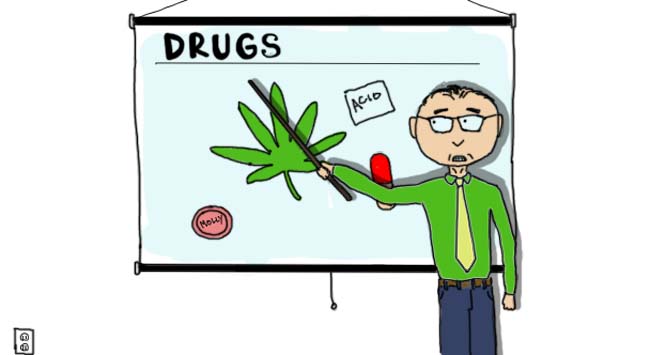Drug abuse is a major public health problem that affects individuals, families, and communities worldwide. Despite the efforts of drug education programs, drug abuse continues to be a significant concern among adolescents. One reason for this is that current drug education strategies often fail to provide accurate and comprehensive information about drug use, leading to misguided beliefs and behaviors. In this blog post, we will explore how current drug education strategies contribute to drug abuse and how honesty and science-based evidence can improve the safety of adolescents.

Current Drug Education Strategies: What's Wrong?
Drug education programs are designed to provide students with information about the dangers of drug abuse and the negative consequences associated with it. However, many of these programs use scare tactics and moralistic messages that are not supported by scientific evidence. For example, some programs rely on exaggerations and myths about the effects of drugs to discourage use, which can lead to a lack of trust in the information being presented. Additionally, many programs do not provide accurate information about the risks and benefits of different drugs or the context in which they are used.
Another issue with current drug education strategies is that they often focus on abstinence-only approaches rather than harm reduction. This means that they do not provide information about safer ways to use drugs or how to minimize the negative consequences of drug use. This can lead to a lack of preparedness and increased risk-taking behavior if adolescents do choose to use drugs.
Finally, current drug education programs can also contribute to stigma and discrimination against people who use drugs. By presenting drug use as a moral failing rather than a health issue, these programs reinforce negative attitudes towards people who use drugs and may prevent individuals from seeking help when they need it.
How Honesty and Science-Based Evidence Can Help
To improve the safety of adolescents, drug education programs must be based on honesty and science-based evidence. This means providing accurate and comprehensive information about the risks and benefits of different drugs and the context in which they are used. It also means acknowledging that some individuals may choose to use drugs despite the risks and providing harm reduction strategies to minimize harm and increase safety.
Honesty and science-based evidence can also help reduce stigma and discrimination against people who use drugs. By presenting drug use as a health issue rather than a moral failing, these programs can help individuals feel more comfortable seeking help and accessing resources when they need it.
Conclusion
Current drug education strategies often fail to provide accurate and comprehensive information about drug use, leading to misguided beliefs and behaviors. By focusing on honesty and science-based evidence, drug education programs can improve the safety of adolescents by providing accurate information about the risks and benefits of different drugs and harm reduction strategies to minimize harm. By presenting drug use as a health issue rather than a moral failing, these programs can also help reduce stigma and discrimination against people who use drugs and improve access to resources and support. It's time for drug education to evolve and prioritize the safety and well-being of our youth.






